Subtleties of planting thuja in Siberia and recommendations for care

Thuja are evergreen trees or shrubs that belong to the cypress family. Some types of such plants can grow up to 70 meters in height, as well as up to 6 meters in diameter. However, for home areas, plants that grow up to 10 meters are more often chosen. Although thuja belongs to conifers, its needles are slightly different. It is soft to the touch, and scaly in structure. Those who decide to decorate their site with this plant must take into account all the features of the climate. In addition, you need to choose the right type of thuja, as well as familiarize yourself with caring for it.
Suitable varieties
For Siberia, it is necessary to select frost-resistant thuja so that they can endure cold winters and Siberian frosts. These include the following plants.
"Brabant"
This tree can grow up to 4 meters in height. The crown of the plant is columnar, up to one and a half meters in diameter. Thuja is covered with completely green needles, which turn brown in winter. Thuja "Brabant" grows very quickly. So, literally in one year, it adds up to 35 centimeters in height, and up to 15 centimeters in breadth.
The plant itself is quite unpretentious. Feels great both in a lit area and in partial shade. Still, it must be protected from drafts. Flowering begins in May, small formations appear on the tree, which resemble cones in shape. It is necessary to plant this type of thuja in black soil.
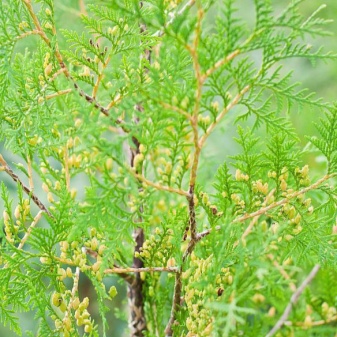
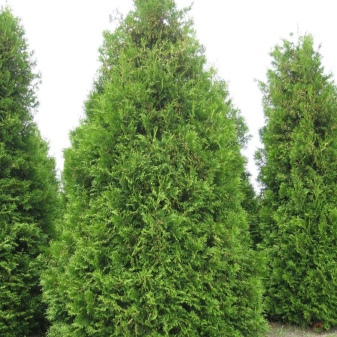
"Emerald"
Thuja of this variety grows up to 4.5 meters in height. The crown of the tree has the shape of a cone, the needles are painted in a dark green color, which does not change even in winter. Thuja does not grow too quickly, but at the same time requires regular watering. Such plants are used more for marking on personal plots. It should not be cut too often.
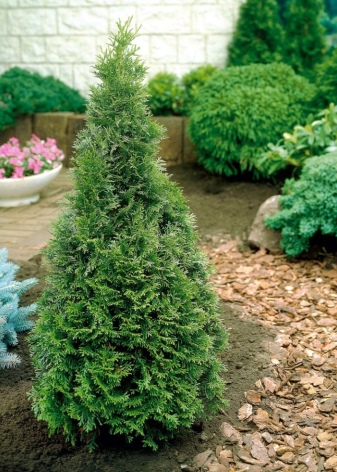
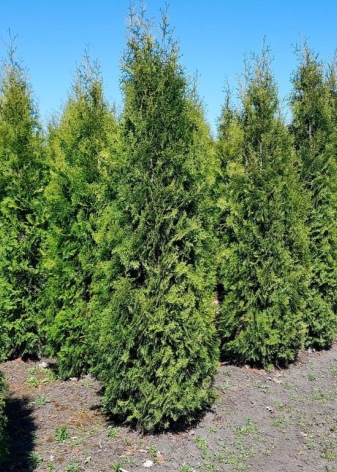
"Columna"
The height of the thuja reaches 6 meters, and up to one and a half meters in diameter. The crown is quite dense and compact, has horizontal shoots. The needles remain dark green throughout the entire period. In one year, such a thuja adds up to 20 centimeters in height.
"Columna" is not too demanding in care, perfectly tolerates any frost. In order for it to grow well, it must be watered regularly.
If the drought is too much, the plant may die.
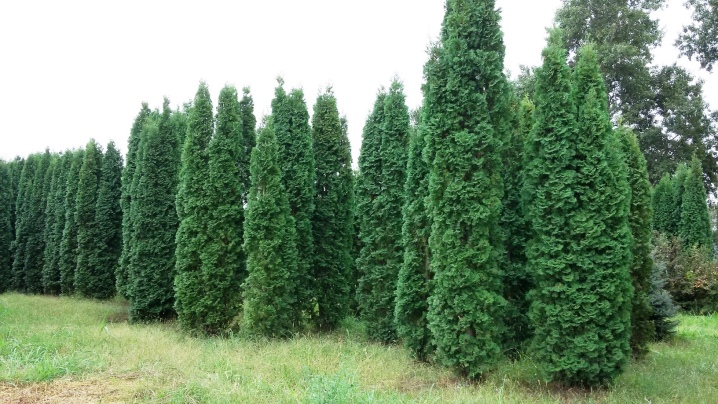
"Holmstrup"
This thuja was brought out in Denmark. Its growth reaches 3 meters, and the crown in diameter is up to 1 meter. The needles of the plant are very dense and at the same time curly. Almost all year round, it has a dark green color. In one year, he adds 12 centimeters in height. The maximum thuja grows only 40 years after planting. Can survive in any conditions.

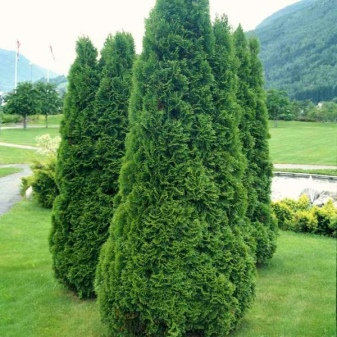
"Fastigiata"
The shape of this thuja is in the form of a column, the shoots are tightly pressed to the very center of the plant. The height of the tree reaches 6 meters. Its needles are colored green. It can grow by 30 centimeters per year, and it grows well after a haircut. The cones on the tree are very small and almost invisible on the tree. This variety of thuja is frost-resistant.
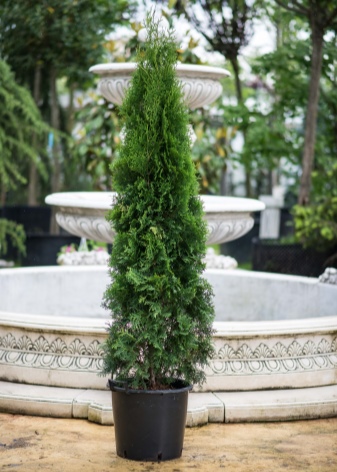
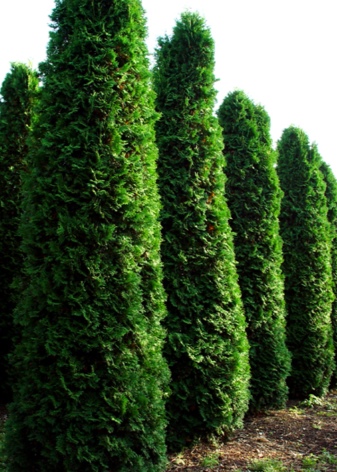
"Sunkist"
The height of the tree does not exceed 5 meters, and the diameter of the crown is two meters. The color of the needles is yellow-golden, over time it becomes bronze. It tolerates low temperatures perfectly, and also loves light too much. You can plant both in groups and individually.

"Wagneri"
The height of the plant reaches 3 meters, and the crown, slightly resembling an egg in its shape, is up to one and a half meters in diameter.The needles are gray-green in color. Thuja requires a lot of light and moisture for planting.
She is very rarely trimmed, as she herself can maintain shape.
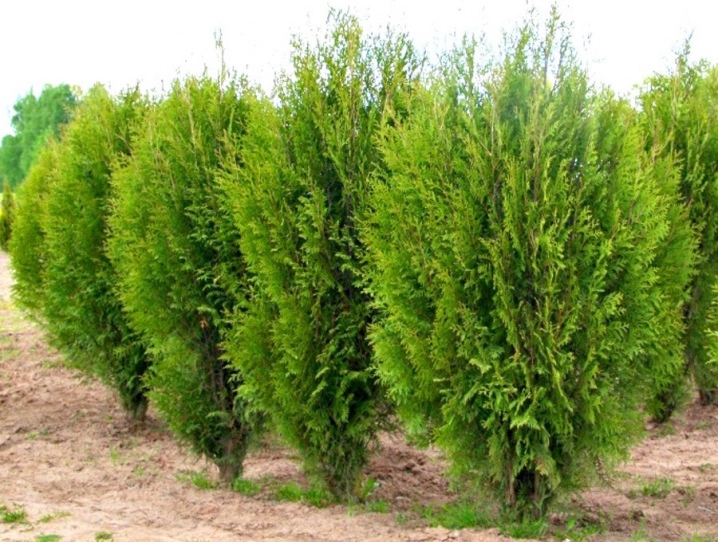
"Clot of Gold"
It is more a shrub than a tree. Its height is no more than two meters, but the crown diameter is 1.5 meters. The crown is a bit like an ellipse in its shape. The needles are painted in copper or lemon color. The shrub grows very slowly. If there is too much moisture during watering, the plant may simply die.

When is the best time to plant?
Most often, thuja is planted in the ground in the spring. So the root system will be able to take root well by the onset of winter, especially in the Siberian region. However, there are such varieties of thuja, such as, for example, "Smaragd", which are planted in the fall. But in this case, the thuja needs to be well covered so that it can survive severe cold.
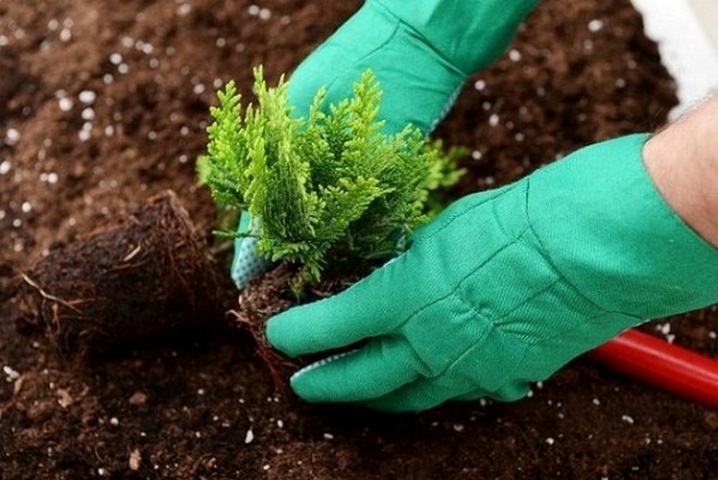
Seat selection
For landing, you need to choose a well-lit place. However, there must also be a shadow. If the plant is in direct sunlight, it will lose too much moisture.
Besides the soil must be sod, with the addition of sand and peat... But this does not exclude clayey soils.
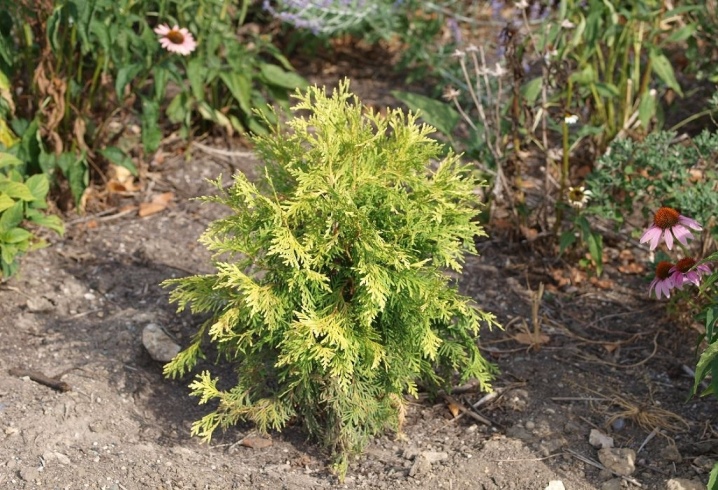
How to plant?
Thuja can be planted both with cones, that is, seeds, and cuttings or seedlings. It should be remembered that when sowing with seeds, the varietal qualities of a particular variety of thuja may not be preserved.
Landing is carried out in special landing pits. Their size should correspond to the earthen coma, which is located on the roots of the thuja. The depth of the hole should be such that the root collar is exactly at ground level.
The distance between the thuja directly depends on their height. So, if the height of the thuja does not exceed 10 meters, then the distance between them should be at least 5 meters. For those plants whose height is up to 6 meters, the distance should be at least two meters. If thuja are planted to create a hedge, then the distance between them should be up to 1 meter.
Since the root system is very close to the surface of the earth, then the planting site must be covered with a layer of mulch on top. This will keep moisture in the summer, and there will also be no need to loosen it.
In addition, the land for planting should consist of sand, turf and peat.
To prevent the water from stagnating too much near the roots, you need to make drainage from gravel or crushed bricks.
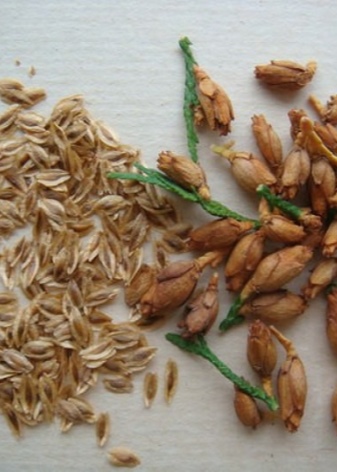
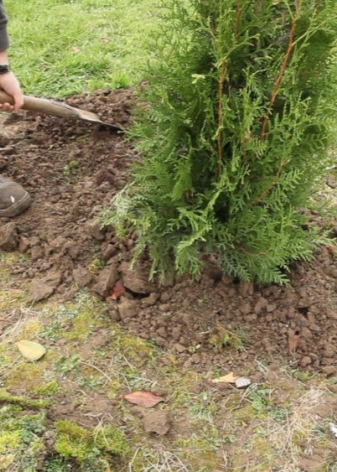
How to care?
Thuja care does not end with the landing itself. In order to grow a full-fledged and healthy tree in a region like Siberia, you will need both good watering and regular loosening. Besides, trees need to be pruned and fed regularly.
Watering
Since thuja is a plant that loves moisture very much, it must be provided with regular and timely watering. When the weather is hot and sunny, watering should be done at least twice a week. At the same time, at least two buckets should be poured onto each plant. Watering is best in the evening. Besides, thuja grows well during rains... In addition, at this time, all accumulated dust is washed off from the crown.

Loosening
It is necessary to loosen the ground as often as possible. Be sure to do this after every rain, as well as every watering. but loosening should be done quite carefully and not too deep... After all, the root system is too close to the surface of the earth.
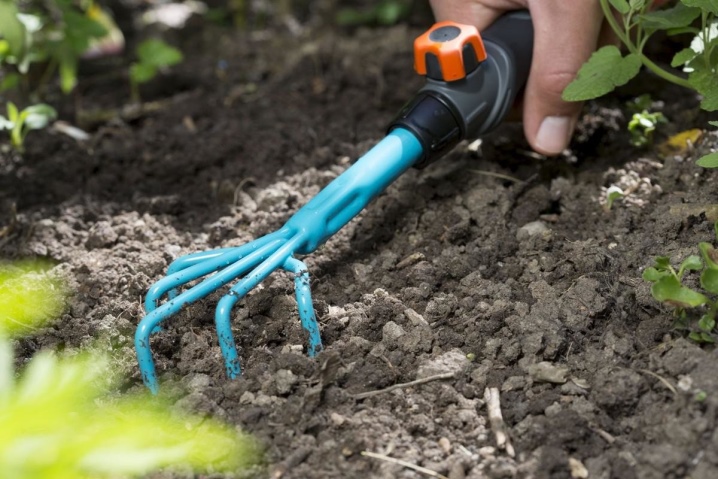
Pruning
This process is considered one of the most important. According to the recommendations of experts, it must be carried out twice a year. You need to do pruning in the spring and autumn. First of all, you need to do sanitary pruning, that is, remove all dry, as well as weak branches. This is followed by already formative pruning. For the Siberian region, the repeated procedure is done in the second period of the summer.
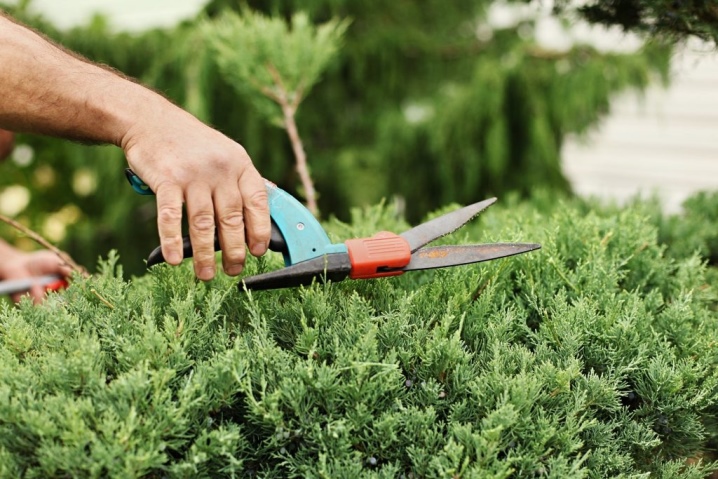
Top dressing
Thuja is a plant that can thrive without additional fertilizers.If there is a need for this, then in early spring, you can feed with fertilizers containing nitrogen. In the summer, it is allowed to apply fertilizers with potassium. When complex fertilizers were introduced during planting, then in the future they can be applied only after one year.
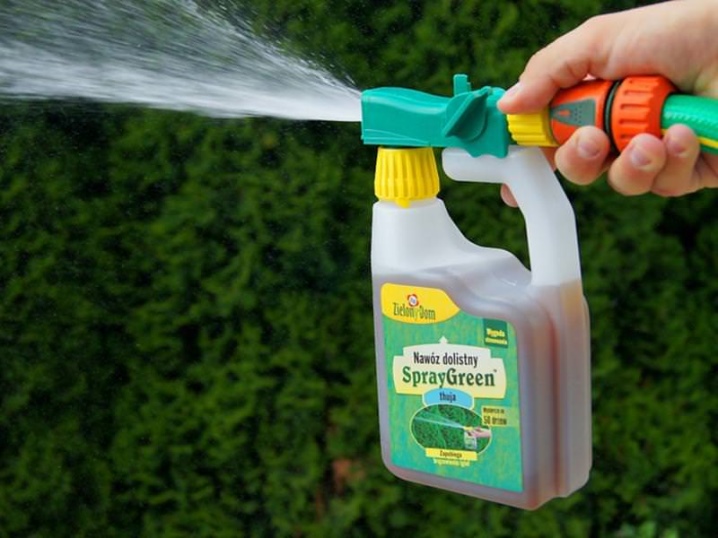
Shelter for the winter
Even though thuja is a fairly hardy plant, it will need to be covered during the winter. You can start training in the fall. At this time, it is necessary to completely stop watering, applying any fertilizers, as well as all pruning work.
First of all, you need to pull off all the branches of the thuja with an elastic cord. This is necessary so that with too strong winds, as well as with heavy snows, they do not break. Next, hilling should be carried out, in addition, it should be made as high as possible. After that, you need to add a layer of mulch.
For dwarf thujas, it will be enough to cover them with cardboard or non-woven fabric. In the Siberian region, small mini-greenhouses are most often built for them. When spring comes, the cardboard is replaced with lutrasil. This is necessary so that too bright sun rays do not burn tree branches. When the weather is fully restored, this shelter can be removed.
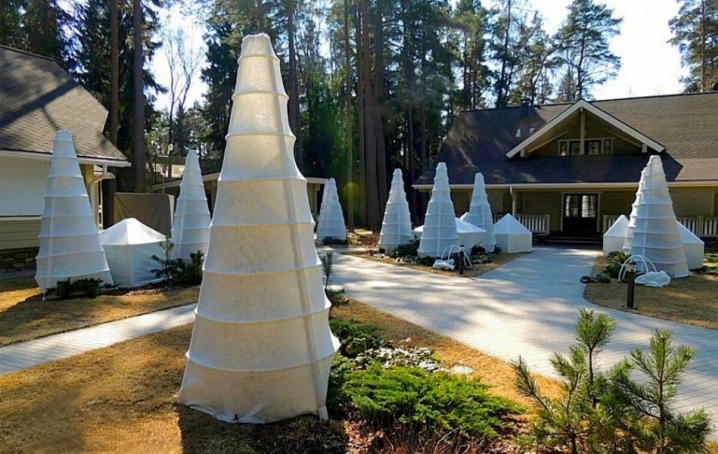
Older plants no longer need shelter. However, the thuja branches are best tied tightly to the trunk with ropes. This will allow you to effortlessly endure all the hardships of the Siberian winter.
Summing up, we can say that thuja can be grown in any region of the country, including Siberia. The only thing that is required is to select a frost-resistant variety of thuja, as well as to provide the plant with proper care. Only in this case, a selected tree or shrub will be able to delight all family members, as well as guests, with green foliage throughout the year.
For the intricacies of planting thuja in Siberia, see the next video.



































































The comment was sent successfully.